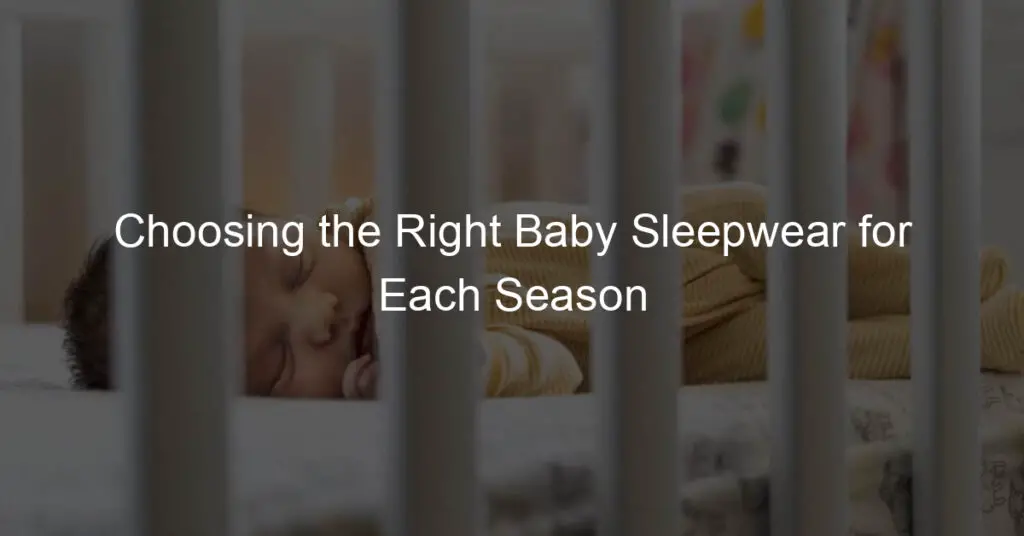Introduction to Safe Baby Propping Techniques
Ensuring the safety of your baby while they sleep is a top priority for every parent. One of the ways to achieve this is through safe baby propping. In this article, we will explore the importance of safe baby propping and the basics of baby safety in a bassinet.
The Importance of Safe Baby Propping
Safe baby propping is crucial for a number of reasons. Firstly, it helps to ensure that your baby is sleeping in a position that promotes healthy breathing. This can significantly reduce the risk of Sudden Infant Death Syndrome (SIDS), a leading cause of death in infants aged one month to one year. Secondly, safe baby propping can help to prevent flat head syndrome, a condition that can occur when a baby spends too much time lying on their back. Lastly, it can also help to improve digestion and reduce the risk of acid reflux.
Understanding the Basics of Baby Safety in a Bassinet
When it comes to ensuring baby safety in a bassinet, there are a few key points to keep in mind. First and foremost, the bassinet should be sturdy and stable, with a firm, flat mattress. Soft mattresses and pillows can pose a suffocation risk. The bassinet should also be free of loose bedding, toys, and other items that could potentially cause suffocation or strangulation. Additionally, the bassinet should be placed in a safe location, away from windows, blinds, and heaters. Lastly, always make sure your baby is placed on their back to sleep, as this is the safest position.
In the following sections, we will delve deeper into the specifics of how to safely prop your baby in a bassinet, including a step-by-step guide, safety tips, and a propping guide. By the end of this article, you will be well-equipped to master the art of safely propping your baby in a bassinet.
How to Prop Your Baby in a Bassinet: A Step-by-Step Guide
Propping your baby in a bassinet is an important task that requires careful attention. This guide will walk you through the process step-by-step, ensuring that your baby is safe and comfortable.
Choosing the right bassinet
The first step in propping your baby in a bassinet is choosing the right one. The bassinet should be sturdy, with a firm mattress and tight-fitting sheets. It should also have mesh walls to allow for proper airflow. According to the American Academy of Pediatrics, a bassinet should also be free of loose bedding, toys, and other soft objects to prevent suffocation.
Preparing the bassinet
Once you’ve chosen the right bassinet, it’s time to prepare it for your baby. Start by cleaning the bassinet thoroughly. Then, make sure the mattress is firm and covered with a tight-fitting sheet. Avoid using blankets, pillows, or stuffed animals as these can pose a suffocation risk.
Positioning your baby
When it’s time to put your baby in the bassinet, position them on their back. This is the safest position for your baby to sleep in, as it reduces the risk of Sudden Infant Death Syndrome (SIDS). Make sure your baby’s head and neck are supported, but avoid using pillows or blankets for this purpose as they can pose a suffocation risk.
Checking your baby’s position
Finally, after your baby is in the bassinet, it’s important to check their position. Their face should be visible and not covered by any bedding or clothing. Their head should be slightly elevated, and their body should be straight, not curved or bent. If you notice any issues, adjust your baby’s position as needed.
Propping your baby in a bassinet may seem like a daunting task, but with careful attention and the right preparation, it can be done safely and effectively. Remember, the safety of your baby is the most important thing, so take your time and follow these steps carefully.
Bassinet Safety Tips
Ensuring the safety of your baby while using a bassinet is of utmost importance. Here are some essential tips to help you use a bassinet safely.
Using a Bassinet Safely
There are three key areas to focus on when it comes to using a bassinet safely: cleanliness, regular checks, and proper placement.
- Keeping the bassinet clean: A clean bassinet is a safe bassinet. Regularly clean the bassinet to prevent the buildup of dust and germs. Use a mild detergent and warm water for cleaning. Always ensure the bassinet is dry before placing your baby in it. This reduces the risk of mold and mildew, which can cause respiratory issues in infants.
- Regularly checking the bassinet’s condition: Regularly inspect the bassinet for any signs of wear and tear. Check for loose screws, broken parts, or any sharp edges that could harm your baby. If you find any issues, fix them immediately or consider replacing the bassinet. Remember, a safe bassinet is a sturdy one.
- Proper placement of the bassinet: The placement of the bassinet in your home is also crucial for safety. Keep the bassinet in a quiet, well-ventilated area away from windows, heaters, and other potential hazards. Also, ensure the bassinet is on a flat, stable surface to prevent tipping over.
By following these safety tips, you can ensure that your baby is safe and comfortable in their bassinet. Remember, your baby’s safety is always the top priority.
Newborn Safety in a Bassinet
Ensuring the safety of your newborn while they sleep in a bassinet is of utmost importance. This includes understanding their sleep patterns, creating a safe sleep environment, and keeping a close watch on them. Let’s delve into these aspects one by one.
Understanding Newborn Sleep Patterns
Newborns have different sleep patterns compared to adults. They usually sleep in cycles of 2-3 hours, waking up for feeding in between. Understanding these patterns can help you anticipate your baby’s needs and respond accordingly. For more information, you can refer to this Wikipedia article on infant sleep training.
Ensuring a Safe Sleep Environment
Creating a safe sleep environment is crucial for your newborn’s safety. This includes keeping the bassinet clean, free from loose bedding or stuffed animals, and placing it in a safe location away from hazards. The mattress should be firm and fit snugly within the bassinet. The American Academy of Pediatrics provides a comprehensive safe sleep guide that you may find helpful.
Monitoring Your Newborn While in the Bassinet
Keeping a close eye on your baby while they’re in the bassinet is another key aspect of newborn safety. This doesn’t mean you need to watch them every second, but regular checks are important. Consider using a baby monitor for added peace of mind. Remember, if your baby seems uncomfortable or is crying, it’s important to respond promptly.
In conclusion, newborn safety in a bassinet involves understanding your baby’s sleep patterns, ensuring a safe sleep environment, and monitoring them regularly. By following these guidelines, you can ensure your baby’s safety and peace of mind for yourself.
Infant Bassinet Positioning
Ensuring your infant’s safety while they sleep is a top priority for all parents. One of the key aspects of this is the correct positioning of your baby in their bassinet. This section will guide you through the safest ways to position your baby in a bassinet.
Safely Positioning Your Baby in a Bassinet
There are three main factors to consider when positioning your baby in a bassinet. These are:
Back sleeping is best
According to the American Academy of Pediatrics, the safest position for your baby to sleep in is on their back. This position reduces the risk of Sudden Infant Death Syndrome (SIDS) by up to 50%. Always place your baby on their back for every sleep, including naps and at night.
Proper head and neck support
Proper head and neck support is crucial to prevent any potential injuries. Use a firm mattress and avoid using pillows, as they can pose a suffocation risk. Instead, opt for a specially designed infant mattress that will provide the necessary support.
Keeping the bassinet free from hazards
Keep the bassinet free from potential hazards such as toys, blankets, and pillows. These items can pose a suffocation risk. The bassinet should only contain the mattress and a fitted sheet. If you’re worried about your baby getting cold, opt for a wearable blanket or sleep sack.
By following these guidelines, you can ensure that your baby is sleeping in the safest possible environment. Remember, every baby is unique and what works for one may not work for another. Always consult with a healthcare professional if you have any concerns about your baby’s sleep habits or safety. 
Bassinet Propping Guide
Propping your baby in a bassinet is a delicate task that requires the right tools and knowledge. This guide will provide you with the necessary information on choosing, using, and knowing when to stop using propping tools.
Choosing the right propping tools
Choosing the right propping tools is the first step in ensuring your baby’s safety and comfort. The tools should be firm enough to provide support, but soft enough to prevent discomfort. The American Academy of Pediatrics (AAP) recommends using a firm mattress with a tight-fitting sheet. Avoid pillows, blankets, and soft toys as they can pose a suffocation risk.
Correct use of propping tools
Once you have the right tools, it’s crucial to use them correctly. The propping tools should be placed under the mattress, not on top of it. This helps to maintain a flat, even surface for your baby to sleep on. The AAP advises against using sleep positioners, as they can lead to suffocation. Always follow the manufacturer’s instructions when using any propping tools.
When to stop using propping tools
As your baby grows and develops, there will come a time when propping tools are no longer necessary. This typically happens when your baby starts to roll over on their own, usually around 4 to 6 months of age. At this point, it’s important to remove all propping tools to prevent your baby from rolling into them and suffocating. Always consult with your pediatrician if you’re unsure about when to stop using propping tools.
Propping your baby in a bassinet is a task that requires careful attention and knowledge. By choosing the right tools, using them correctly, and knowing when to stop, you can ensure your baby’s safety and comfort.
Baby Sleep Safety in a Bassinet
Ensuring your baby’s safety while they sleep in a bassinet is crucial. One of the most important aspects of this is understanding Sudden Infant Death Syndrome (SIDS) and implementing safe sleep practices.
Understanding SIDS and Safe Sleep Practices
Sudden Infant Death Syndrome (SIDS) is a term used to describe the sudden and unexplained death of a baby less than one year old. Understanding SIDS and how to reduce its risk is a vital part of ensuring your baby’s safety while they sleep.
What is SIDS?
SIDS, or Sudden Infant Death Syndrome, is a term that describes the sudden and unexplained death of a baby who is less than one year old. It usually occurs during sleep, without any signs of suffering. Despite extensive research, SIDS remains unpredictable and largely unpreventable. For more information, you can visit the Wikipedia page on SIDS.
How to reduce the risk of SIDS
While SIDS cannot be completely prevented, there are measures you can take to reduce the risk. These include always placing your baby on their back to sleep, using a firm sleep surface, keeping soft objects and loose bedding out of the sleep area, and avoiding exposure to tobacco smoke.
Safe sleep practices for your baby
Safe sleep practices are essential for reducing the risk of SIDS and ensuring your baby’s safety in a bassinet. These practices include placing your baby on their back to sleep, using a firm sleep surface, keeping the sleep area free from soft objects and loose bedding, maintaining a comfortable room temperature, and avoiding the use of sleep positioners.
In conclusion, understanding SIDS and implementing safe sleep practices are key to ensuring your baby’s safety while they sleep in a bassinet. Always remember to place your baby on their back to sleep, use a firm sleep surface, and keep the sleep area free from soft objects and loose bedding.
Conclusion: Mastering the Art of Safely Propping Your Baby in a Bassinet
As we wrap up our comprehensive guide on safely propping your baby in a bassinet, let’s revisit some of the key takeaways and remind ourselves of the importance of continual learning and vigilance in ensuring the safety of our little ones.
Recap of key takeaways:
Firstly, we learned the importance of proper positioning and propping techniques in a bassinet. We discovered that the safest position for a baby is on their back, with no loose bedding or toys that could pose a suffocation risk. We also discussed the importance of regularly checking the bassinet for any potential hazards and ensuring it meets the safety standards set by the Consumer Product Safety Commission.
Importance of continual learning and vigilance:
Secondly, we emphasized the importance of continual learning and vigilance. As parents or caregivers, it’s crucial to stay updated with the latest safety guidelines and recommendations. Remember, safety doesn’t stop at the purchase of a bassinet. It’s an ongoing process that requires regular checks and updates to ensure your baby’s environment remains safe and conducive for their growth and development.
In conclusion, mastering the art of safely propping your baby in a bassinet is a skill that every parent or caregiver should possess. It not only ensures the safety of your baby but also contributes to their overall well-being. Remember, the safety of your baby is paramount, and it starts with you.














